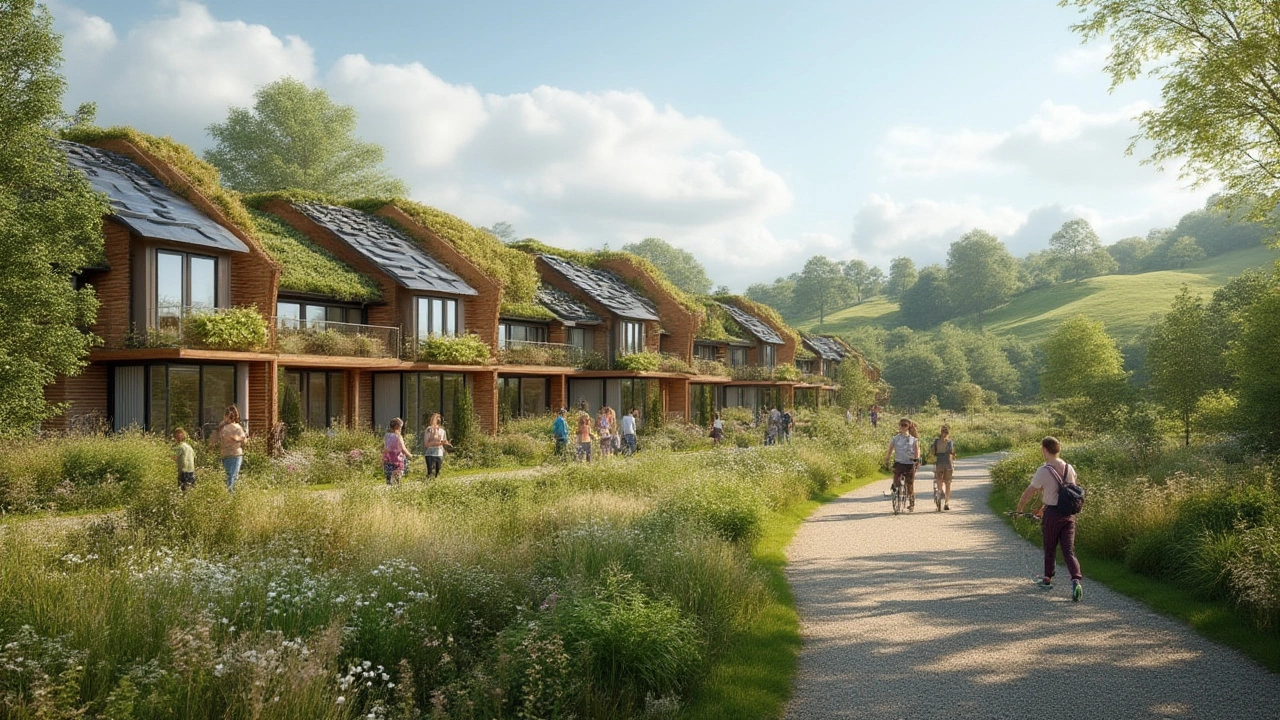Zero Energy Home: How to Build and Live in a Net‑Zero House
If you’re tired of sky‑high bills and want a house that essentially pays for its own power, a zero energy home might be exactly what you need. It’s a building that produces as much clean energy as it consumes over a year, meaning you barely touch the meter. In Lancashire’s cool, damp climate, getting it right takes a bit of planning, but the payoff is lower expenses, a smaller carbon footprint, and a comfortable indoor climate all year round.
Key Features of a Zero Energy Home
First off, think airtightness. A snug envelope stops warm air from escaping in winter and keeps hot air out in summer. Use high‑quality membranes, well‑fitted doors, and double‑glazed windows with low‑e coatings. Next, insulation is your best friend. Thick wall, roof, and floor insulation keep the temperature stable, so your heating system runs less often.
Renewable energy is the other half of the equation. Most zero energy homes in Lancashire rely on solar photovoltaic (PV) panels because they’re easy to install and work well with the local daylight hours. Pair the panels with a battery storage system, and you can store excess power for cloudy days or night‑time use. If your site gets good wind, a small turbine can supplement the PV output.
Efficient appliances and LED lighting round out the package. Modern heat pumps, especially air‑source models, are far more efficient than traditional boilers and can double as cooling in summer. Smart thermostats help you fine‑tune heating schedules, ensuring you never waste energy when nobody’s home.
Practical Steps to Get Started in Lancashire
1. **Check the Site** – Look at orientation, shading, and roof pitch. South‑facing roofs get the most sun, which boosts solar output. Use online solar calculators to estimate how many panels you’ll need.
2. **Set a Budget** – Initial costs are higher than a typical build, but you’ll recoup money through lower bills and possible government grants. Talk to local councils about energy‑efficiency incentives; many offer subsidies for solar or insulation upgrades.
3. **Choose the Right Builder** – Not every contractor knows zero‑energy standards. Pick a team with experience in Passivhaus or similar schemes. Ask for case studies of homes they’ve delivered in the North West.
4. **Design for Performance** – Work with an architect who can model the house’s thermal performance. A 3‑D simulation will show you where heat loss is highest and help you size your PV system accurately.
5. **Plan for Monitoring** – Install an energy monitoring system that shows real‑time production and consumption. Seeing the numbers on your phone makes it easier to adjust habits and spot any issues early.
6. **Think Long‑Term** – Remember that a zero energy home isn’t “set it and forget it.” Over the years, you may want to add more solar capacity, upgrade battery storage, or replace windows with newer, higher‑performance models.
By following these steps, you can turn a typical Lancashire cottage into a modern, low‑impact haven. The biggest trick is to treat the house as a whole system—air tightness, insulation, renewable power, and efficient appliances all work together. When they’re balanced, the house essentially runs itself, and you enjoy comfort without constant worry about the next energy bill.
Ready to start? Grab a notebook, sketch a rough layout, and reach out to a local sustainable‑building specialist. The sooner you begin, the faster you’ll see the benefits of living in a home that gives back to the environment and your wallet.

Eco-Friendly Homes: Sustainable Houses and Green Building for the Future
Explore the most environmentally friendly types of homes, get real-life tips for greener living, and learn which building materials, designs, and features make a house truly sustainable.
Continue Reading